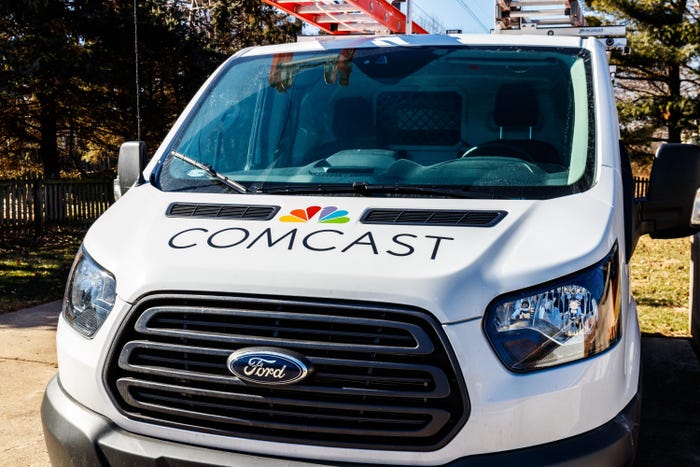6G hopefuls shed the hyperbole
Gone are the days when 6G proponents boast of holograms and teleportation. Today, amid an ongoing slowdown in 5G spending, some 6G players are taking a more pragmatic view.

Roughly four years ago, during the boom time in 5G, wireless vendors painted a pretty picture of 6G.
In 2020, Ericsson said 6G would create an "Internet of the senses" that would essentially allow users to digitally transport themselves all over the world. Also, in 2020, Samsung hinted that the technology would support holograms like the "Help us, Obi-Wan" one from Princess Leia in Star Wars. And, in 2019, many industry players assumed 6G communications would expand into the Terahertz (THz) spectrum bands, those that are far, far higher than even the millimeter wave (mmWave) bands deployed in a handful of locations in the early days of 5G.
But today, an industry in a chilly 5G spending freeze with few growth opportunities sees 6G a little differently.
"6G, is it a revolution or evolution?" asked AT&T's Brian Daly, AVP of wireless technology and standards for the operator, during a keynote presentation at the Network X Americas event. Network X is run by Informa, which also owns Light Reading.
A fresh look at 6G
During his presentation, Daly called for a slightly different approach to network upgrades in general.
"The cellular industry is today often driven by generation cycles, also known as the Gs. These Gs come with an associated forklift upgrade," he said. "We need to develop a new continuous integration and continuous delivery model, or CI/CD, one that emphasizes both continuous innovation as well as continuous disruption. Today, the focus on network evolution will be about leveraging cloud, artificial intelligence and spectrum instead of waveform change and network architecture change."
Daly also called into question the industry's general strategy of tying network upgrades to the release of additional spectrum. 5G has primarily centered on expanding cellular operations into midband spectrum stretching from 2.5GHz to around 4GHz. 6G, meanwhile, has been pegged for the centimeter and THz bands.
"Should spectrum decisions be linked to Gs going forward?" Daly wondered.
Daly also said that, so far, there's no clear reason to develop a new transmission technology – like 5G New Radio (NR) – to carry future 6G signals. "At this stage, there is no decision on whether a new radio access technology or core network is going to be required for 6G mobile services," he said, noting that 6G research remains ongoing.
Finally, Daly argued that open interfaces ought to play a major role in 6G standards – a position that aligns with AT&T's new open RAN agreement with Ericsson.
An evolving discussion
In his introductory keynote, Heavy Reading analyst Gabriel Brown said that most 6G use cases today resemble the advanced 5G use cases touted roughly five years ago, in the early days of 5G. Informa also owns Heavy Reading.
Regardless, officials in the US government believe it's time to begin preparing for the next generation after 5G.
"While we are still realizing the full benefits of 5G, we at NTIA know from past experience that we need to be planning ahead," said Alan Davidson, head of the Biden administration's NTIA, in his Network X keynote remarks. "So it is not too early to be preparing for 6G. In particular, it is so important for policymakers to consider how we can harness and support the innovations this next generation of technology will bring."
Along those lines, Davidson said the NTIA would open a proceeding on 6G to solicit comments from industry, academia and other players on how US officials could prepare for the technology.
"The responses – due in August – will be used to develop a report and inform US policy for the 6G future. That includes support for US industry to play a leading role in the development of global standards and innovation ecosystems for 6G," Davidson said.
Preparing the industry
"Market readiness is the piece [of 6G] that can't be ignored," said David Young, VP of technology and solutions at ATIS and managing director of the Next G Alliance. As Light Reading has previously reported, ATIS launched the Next G Alliance in 2020 and, in 2021, assembled a diverse group of members, ranging from Apple to Verizon to the US Department of Defense. The group continues to organize North American players around a cohesive 6G strategy.
"You really need to have the market ready at the same time as the technology is ready," Young said of 6G.
If that happens, Young said 6G might support a variety of new applications and services, including indoor service robots, extended reality experiences, and digital twins for hazardous environments.
Young also mentioned fixed wireless as another noteworthy application that 6G might support. "It's important that that's part of 6G from day one," he said.
That's noteworthy, considering fixed wireless over 5G networks has had a dramatic impact on the US broadband marketplace. In response, the US cable industry has begun a regulatory campaign against the technology with the goal of preventing fixed wireless operators from acquiring more licensed spectrum. After all, fixed wireless has cut into the core Internet business of many US cable providers.
6G "is going to require a lot of work," Young said.
There are many unknowns in 6G. One is whether US and international regulators will release more spectrum for 6G operations. Another is how the O-RAN Alliance's open RAN specifications might be integrated into a future 6G standard. And it's also unclear whether 6G standards might be split between the US and its allies and China and its allies.
Of course, perhaps the biggest 6G unknown is whether network operators can profit from the technology. After all, most 5G network operators have struggled to show profits from their 5G technology investments.
Most industry players expect commercial 6G networks to launch around 2030. The 3GPP standards group is expected to begin early work on 6G standards as early as later this year.
Read more about:
Network XAbout the Author(s)
You May Also Like














